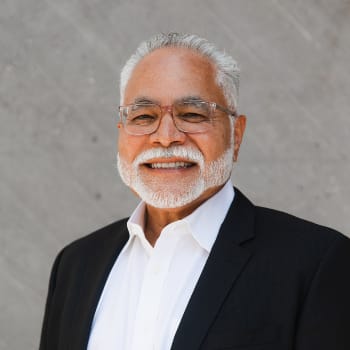Surfing uniquely bridges mental health disorders’ toll on mind, body, and spirit. The sea, the sun, the air – something about that universe that draws both young and old to its healing properties. Surfing’s immersive sensory experiences provide more than a respite from life’s toils and troubles. It provides a grounding perspective, a sense of wellness, and a oneness with the world and ourselves.
Therapeutic surfing is a structured therapy approach. This approach targets those with mental health disorders, those on the autism spectrum, people with physical disabilities, and disadvantaged youth who have been subjected to trauma. Surfing therapy is holistic, centering on an individual’s needs and strengths, and focused on recovery.
What are Mental Health Disorders?
Mental health disorders affect our social, emotional, and psychological well-being. Often called behavioral health disorders, mental illnesses affect 1 in 5 Americans or 52.9 million people. In any given year, 1 in 4 adults is diagnosed with a mild, moderate, or severe mental disorder.
Mental health disorders range from mild to severe and are classified into two categories. These categories are Any Mental Illness (AMI), the umbrella term, and Serious Mental Illness (SMI), a subset of AMI.
Types of Mental Health Disorders
Mental health shapes the way people interact with others through how they think, behave, and cope with influences like stress. Mental health disorders can make daily living activities more challenging, ultimately making it more difficult to function at home, work, school, and in the community.
However, not everyone with poor mental health has one of the over 200 mental health disorders.
Two of the most common mental health disorders are:
- Anxiety
- Depression
Both are diagnosed by medical professionals and are very treatable.
Anxiety Disorders
Anxiety disorders include Post-Traumatic Stress Disorder (PTSD), panic disorder, and generalized anxiety disorder (GAD). As well as various phobias like social phobia and claustrophobia.
PTSD
Post-Traumatic Stress Disorder isn’t an anxiety disorder relegated to veterans. Anyone, including children, can suffer from the after-effects of psychological trauma. PTSD may not manifest itself for many years after the trauma happens. It is very common in anxiety disorders, with around 3 million cases in the U.S. alone.
Depressive Disorders
Depressive illnesses like bipolar disorder and clinical depression affect 9.5 percent of adults annually. Women are twice as likely to develop major depression as men, but both men and women develop bipolar disorder equally.
It is possible for people to have more than one mental disorder at the same time. Depression and related disorders tend to occur with anxiety disorders. A person may be told that you have comorbidity. That just means that they have more than one disorder occurring at the same time.
These disorders can affect any age, gender, or socioeconomic group. Studies have found that these and other disorders can be significantly affected by physical activity. Everyday therapeutic physical activities include horseback riding, surfing, and walking.
Exercise has long been known to make a difference in how a person can function. This is especially true when a person struggles with anxiety, depression, or another mental health condition.
Exercise & Mental Health
Data does more than suggest that exercise benefits mental health. A 2021 study by the John W. Brick Foundation found a significant correlation between physical activity and a person’s psychological quality of life.
According to the study, depression, general anxiety, PTSD, and mood all benefited enormously from moderate to vigorous exercise several times a week. Exercise releases endorphins, commonly known as “pleasure” hormones. Endorphins work both as a natural pain reliever and promote stress relief.
The pleasure derived from physical activities like surfing helps improve a person’s overall well-being. Medical professionals recognize surf therapy as a standard therapy for mental health that empowers individuals physically, emotionally, and mindfully.
It’s no wonder that therapeutic surfing has come into its own as an integrated approach to healthcare. This is recognized not only in the U.S. but globally as well.
Surfing for Mental Health
Surfing connects both mind, body, and spirit with the sea. Surf therapy breaks down the barriers that inhibit confidence, self-esteem, and coping skills.
When a person is out on the water, they have the opportunity to gain perspective on themself. They also have increased mindfulness so they can focus. This allows the person to relax and their mind while exercising their body and taming their spirit.
Benefits of Surfing for Mental Health
There are multiple mental health benefits to surfing. Not only does it give people exercise that they need physically every day, but it also helps brain function return to healthy levels. The hippocampus, prefrontal cortex, and amygdala are three brain areas. These areas are responsible for memory, problem-solving, and emotions.
At times they may become out of balance, resulting in particular mental health conditions. These conditions may include anxiety, depression, and post-traumatic stress disorder.
Surfing helps stabilize those with mood disorders by balancing emotions and soothing the mind. Therapeutic surfing also promotes cardiovascular health and self-awareness. Over time, one’s physical and mental well-being benefits promote a more significant quality of life.
Cardiovascular Health
Surfing increases the heart rate, which benefits overall cardiovascular health. The standard guideline suggests daily 20 to 30 minutes of moderate to vigorous exercise.
Training
Learning to surf helps focus the mind on the task of being in the water. During a surf session, the mind is focused on the sheer physical concentration of standing and balancing on the surfboard. This takes upper body and abdominal strength. It’s physically demanding, teaching you to reconnect with your body while burning around 250 calories an hour.
Upper Body & Core Strength
Surfing increases upper body and core strength as surfers must paddle out to the wave. While also balancing their way through riding it and finally paddling back to the beach.
Vitamin D
Surfing gets people out into the sun and boosts Vitamin D in the body. It is recommended for the average person to get 10 minutes of natural sunlight daily. Vitamin D boosts mood, lowers blood pressure, and strengthens immune defenses, bones, and cognitive function. It is essential for brain development and impacts serotonin levels, a neurotransmitter that controls emotions.
Better Sleep
It can be challenging to think clearly when a person suffers from insomnia. Overly tired minds weaken brain function and cognitive abilities. Exercise from surfing can help improve sleep quality.
Mindfulness & Increased Happiness
Surfing allows the mind and body to live in the moment and be present. It’s a natural “high” that requires the person to be attuned to the elements of the environment. People can become one with what they are doing while surfing. This mindfulness, this self-awareness, clears the person’s head and reduces stress.
Finding Mental Health Treatment in Orange County
Surfing can be challenging, but so is life. Overcoming the difficulties of riding the waves teaches resilience. No two waves are the same. Each is a new chance to fail and succeed–and grow in confidence.
The admissions team at SoCal Mental Health is ready to answer any questions about our services and crisis stabilization program. We are here to support the journey to better mental health and wellness. Our client’s physical, mental, and safety are important to us.












